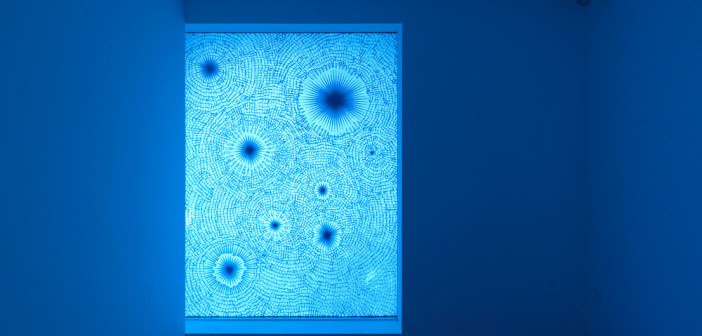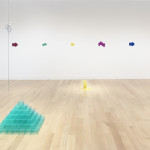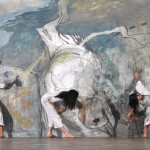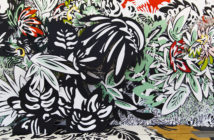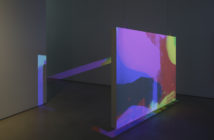BR&S's editors are beginning a regular blogpost highlighting events and exhibitions we've seen and enjoyed, but, for any number of reasons, weren't able to cover. Usually, that reason is time; we feel fortunate to live in a city where there are enough powerful and interesting art events for us to feel challenged to see or review them all. So without further ado, we bring you:
Tony Feher at deCordova Museum and Sculpture Park
May 24 to September 15, 2013
My most recent art crush has to be Tony Feher. Like other crushes that precede him, our first encounter around Constellation, a circle of scattered coins, and smashed Budweiser cans crowned with large glass marbles, prompted the kind of haughty bemusement I've been known to shield myself with when I run into art I just don't understand. And then the work lingers, and won't depart. Fast-forward five years: I'm rushing to deCordova to see his retrospective.
Feher possesses the skill to extract the essence of mundane objects: their shape, color, material, density, pattern. If his work claims a place in the lineage of ready-mades, where the object's connotation remains an important part of the work, Feher diverts our attention away from the object's origin by underscoring its form. He does this simply, and always with humor, by following a couple of principles: through the repetition and accumulation of elements, he generates pattern and architecture on various scales; through the isolation of other elements, he draws our eye to color and shape. The work creates its own sense because over the course of several pieces one begins to identify its nouns and verbs, if the noun were the individual recurring objects (marbles, pennies, bottles), and the verb were the way they are combined (stacks, clusters, arrays).
Meaning is also imparted through Feher's clever use of titles. These often read like jokes, or perhaps like the opening line to a story, and, were we to rest too much attention on its minimal heritage, they broaden the work considerably by insinuating the possibility of darkness.
—Stephanie Cardon
Absent | Present at Montserrat College of Art
January 25 to March 30, 2013
Collecting the work of Zsuzsanna Szegedi and Kate Gilmore, Absent | Present looked to their performative works that use video. Always working against the notion that video or photography is limited to documenting past works, these two artists use the camera’s lens in slightly different ways.
Szegedi's A Proper Erasure records site-specific dancing and drawing that is then projected back onto the same site. It created an open aesthetic loop that communicated more visually than a static mural would have done on its own. It also creates the conditions where the work can change through the run of the show, which it did. Through repeated erasure and wash-like marks, the final object wasn’t an object at all, but a process that was ongoing during the exhibition. Szegedi collaborated with other artists (dancers, Montserrat students, etc) but also with herself across time.
Gilmore’s works, made of hybrid formats and actions, are composed for the camera. Her Between a Hard Place is a video of her repeatedly breaking through drywall using nothing but her body. The body seems to be most important element in her works, as that’s where the action originates. Dripping colors that are exposed during the motion of the bodies, often bursting forth from a violent act (kicking, hitting, dropping, throwing, etc), comes in as a close second though. Her work is part Niki de Saint Phalle shooting at the prepared canvas to create the painting and the more compelling parts of Matthew Barney’sDrawing Restraint series.
Both artists’ works work like a venn diagram. Their work is situated in the space where sculptural, drawing, video, and performance overlap.
—John Pyper
- Tony Feher, Come Out and Play Stephen Jay, 2013 Painter’s tape Courtesy of the artist and Sikkema Jenkins & Co. Photo: Clements Photography and Design, Boston
- Tony Feher installation at deCordova Sculpture Park and Museum, 2013 Photo: Clements Photography and Design, Boston
- Zsuszanna Szegedi, A Proper Erasure, 2013

